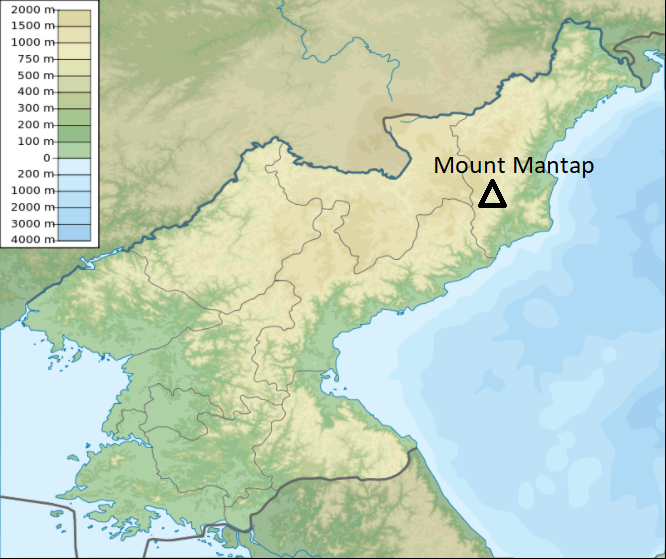Mount Mantap - NK.png

Much has been made in the media of the announcement that North Korea will halt ICBM and nuclear warhead testing. The U.S. President sees this as a positive step toward the denuclearization of the Korean Peninsula. The N.K. leader says that they no longer need to test ICBMs or nuclear warheads because they have learned what they needed to to construct their nuclear arsenal. There may be another reason that N.K. is going to stop testing nuclear warheads underground at it test site.
The last five of N.K. underground nuclear warhead tests were all conducted under Mount Mantap at the Punggye-re nuclear test site in the northwest part of N.K. N.K. selected Mount Mantap because of its elevation, almost seven thousand feet above sea level, and because they believed that its thick, gentle slopes would be able to withstand the structural damage caused by the underground blasts. There were no visible signs of damage after the first four test detonations.
The last test conducted was a powerful thermonuclear blast over two thousand feet below ground level. However, the one hundred kiloton bomb detonated on September 3 opened up a cavity that was over six hundred feet in diameter.
Following the last test, the green vegetation covering the slopes of the mountain turned reddish brown. The test tore a hole in the mountain and created a “chimney” that could permit radioactive fallout from the test zone to escape into the atmosphere above the mountain. As the shock waves traveled though the mountain, a large section of the mountain’s peak collapsed into the cavity formed by the blast and left a crater in the top of the mountain that was visible in satellite photos of the site.
The U.S. Geological Survey reported that they had detected an earthquake in the area near the mountain of 6.3 on the Richter Scale at a depth of fourteen miles. Chinese scientists said that they detected a second earthquake near the mountain of 4.6 on the Richter Scale eight minutes after the first quake was registered. Tremors from the two quakes were felt in the Chinese city of Changchun which is two hundred and fifty miles from the test site. People in eastern Russia also reported feeling the effects of the tests. There were three small additional quakes in the general area of the test site which reinforce the idea that the mountain has lost geological stability.
A researcher at the Chinese Academy of Sciences in Beijing said that their studies indicated that the N.K. test “site was wrecked beyond repair. “Different teams using different data have come up with similar conclusions,” he said. “The only difference was in some technical details. This is the best guess that can be made by the world outside.”
Chinese scientists are afraid that escaping fallout from the “chimney” in Mount Mantap could travel over the N.K. border and threaten Chinese territory. The Chinese city of Baishan with over one million inhabitants is less than fifty miles from Mount Mantap.
A scientist in Beijing said that it was likely that N.K. received a stark warning from the Chinese government to discontinue their tests of nuclear warheads under Mount Mantap. He said, “The test was not only destabilizing the site but increasing the risk of eruption of the Changbai Mountain,” a large, active volcano at China-Korean border.”